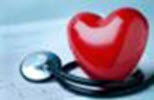Dr. Gilles Ouellet Bio
Dr. Gilles Ouellet , Cardiologist, Chateauguay QC, J6K 3A9 Is in good standing with the College of Physicians and Surgeons of Canada,Dr. Gilles Ouellet , Cardiologist, Chateauguay QC, J6K 3A9 is in good standing with the Canadian Cardiovascular Association and the Canadian Medical Association
Key Words: Atrial Fibrillation, Cholesterol, COPD & Heart Failure, Coronary Microvascular Disease, Brugada Syndrome, Heart Disease, Heart Failure, and the Heart Benefits of Bell Peppers, Qu'est-ce que l'ablation, Informations sur les défibrillateurs, Comment réduire les gras saturés
Dr. Gilles Ouellet , Cardiologist, Chateauguay QC, J6K 3A9
Dr Gérald Tremblay , Cardiologue, Chicoutimi QC, G7H 6B9 Est en règle avec le Collège des médecins et chirurgiens du Canada, Dr Gérald Tremblay , Cardiologue, Chicoutimi QC, G7H 6B9 est en règle avec l'Association canadienne de cardiologie et l'Association canadienne Association médicale
Mots clés : Fibrillation auriculaire, cholestérol, MPOC et insuffisance cardiaque, maladie microvasculaire coronarienne, syndrome de Brugada, maladie cardiaque, insuffisance cardiaque et bienfaits des poivrons pour le cœur, Qu'est-ce que l'ablation, Informations sur les défibrillateurs, Commentaire réduire les gras saturés
Dr Gérald Tremblay , Cardiologue, Chicoutimi QC, G7H 6B9
Dr Gilles Ouellet, cardiologue, Châteauguay QC, J6K 3A9 Est en règle auprès du Collège des médecins et chirurgiens du Canada, Dr. Gilles Ouellet, cardiologue, Châteauguay QC, J6K 3A9 est en règle auprès de l'Association canadienne de cardiologie et de l'Association médicale canadienne.
Mots clés : Fibrillation auriculaire, cholestérol, MPOC et insuffisance cardiaque, maladie microvasculaire coronarienne, syndrome de Brugada, maladie cardiaque, insuffisance cardiaque et bienfaits des poivrons pour le cœur, Qu'est-ce que l'ablation, Informations sur les défibrillateurs, Commentaire réduire les gras saturés
Dr Gilles Ouellet , Cardiologue, Châteauguay QC, J6K 3A9
( Dr. Gilles Ouellet, Cardiologist, Chateauguay, QC) is in good standing with the College of Physicians and Surgeons.
If you are looking for local services or treatment from a Local Cardiologist for reviews, contact info, practice history, affiliated hospitals & more in the office or hospital from a Cardiologist, contact a provider such as ( Dr. Gilles Ouellet ) to inquire if they are accepting patients at the office you need a referral. Phone number to book an appointment 450-691-8191 ( Dr. Gilles Ouellet ) Is in good standing with the College of Physicians and Surgeons of Canada and the CANADIAN CARDIOVASCULAR SOCIETY
Keywords: Heart Health: Heart Failure, Heart Health: Atrial Fibrillation, Heart Health: Heart Attack, Heart Health: Cardiothoracic Surgery, Heart Health: Heart Disease, Heart Health: Congestive Heart Failure
The speaker in the video may have no association with ( Dr. Gilles Ouellet, Cardiologist Chateauguay, QC ).
( Dr. Gilles Ouellet, Cardiologist Chateauguay, QC ), may talk about some of the conditions and some of the treatment options shown on the videos. Always talk with your Local Cardiologist at the office about the information you learnt from the videos in regards to treatments and procedures the Local Cardiologist could perform and if they would be appropriate for you. Remember good information is the corner stone to understanding your condition or disease.
Education
If you are the practitioner featured on this page and would like to either update the current information or claim the page please take advantage of our patient and physician resources here.
If on the other hand you would like to be removed for whatever reason from the directory please click here.
This content is for informational purposes only, and is not intended to be a substitute for professional medical advice, diagnosis or treatment. Always seek the advice of your physician or other qualified healthcare professional with any questions you may have regarding a medical condition.


